
We all know and love William Morris - but there were many other great Arts & Crafts designers whose work still influences the way our homes look now. Here’s a Pooky guide to six of the finest…
Mention Arts & Crafts and inevitably the first name that pops into one’s head is William Morris. So famous and influential was the great designer that he’s almost synonymous with the movement - and of course he’s still making our homes beautiful to this day …Witness Pooky’s lampshade collaboration with Morris & Co., or the incredible ‘Relaxed Maximalism’ style of Instagram star Sarah Laming (@ahometomakeyousmile).
But WM wasn’t the only Arts & Crafts talent, and Pooky’s new collaboration with 'Archive' by Sanderson Design gives us a welcome opportunity to hop back to the 19th and early 20th centuries. Some design movements have their time in the sun and then disappear completely, or are overtaken by the Next Big Thing, but the legacy of the Arts & Crafts Movement is still very much apparent in today’s interior design world.
We’ve been looking at the work of some of the movement’s most influential designers and what is so striking is the timeless quality of their work – a timeless maximalism, if you will. Here are six you should know about…
1) Christopher Dresser (1834—1904)
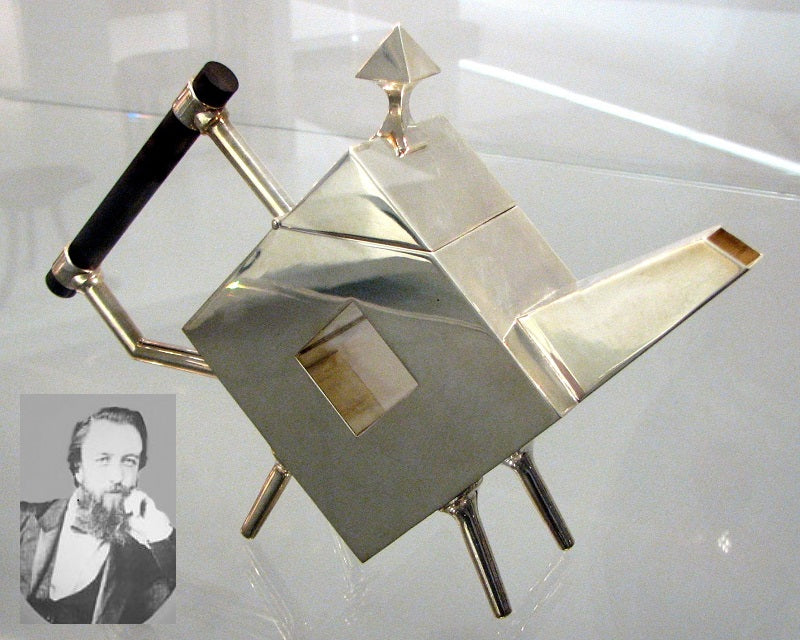
Teapot, 1879, designed by Christopher Dresser (inset) (Both images public domain)
When it comes to significant figures, it’s hard to overestimate the influence that Christopher Dresser had on design - not only on the Arts & Crafts Movement but also on the Aesthetic Movement and British Art Nouveau, which was to become a global design phenomenon.
He began his design education at 13 and, from an early age, developed a creative portfolio that included carpets, ceramics, furniture, glass, graphics, metalwork, and printed and woven textiles. His prolific and accomplished output led to a substantial number of works for the International Exhibition of 1862 in London.While Dresser’s work included high-end designs for Tiffany and Co and Liberty of London, his mantra was: “The cheapest and commonest of things need not be ugly.”
Dresser spent time in Japan and the country’s design and craft traditions had a major impact on his own work. He also wrote extensively on design and his books established the guiding principles of the Arts & Crafts movement. From the 1860s onwards, he designed ranges for some of the country’s leading ceramics firms, including Minton, Wedgwood, Royal Worcester, and Old Hall, earning a reputation as one of the leading ceramics designers of the period.
Some of Dresser’s metalwork designs were in production into the 21st century, including oil and vinegar sets and toast racks, manufactured until recently by Alessi. (Speaking of Alessi, just take a good look at that teapot…) And in a fascinating cross-cultural reference, one of Dresser’s Old Hall designs inspired Alan Garner’s classic 1967 young adult novel, The Owl Service.
2) Arthur Heygate Mackmurdo (1851—1942)
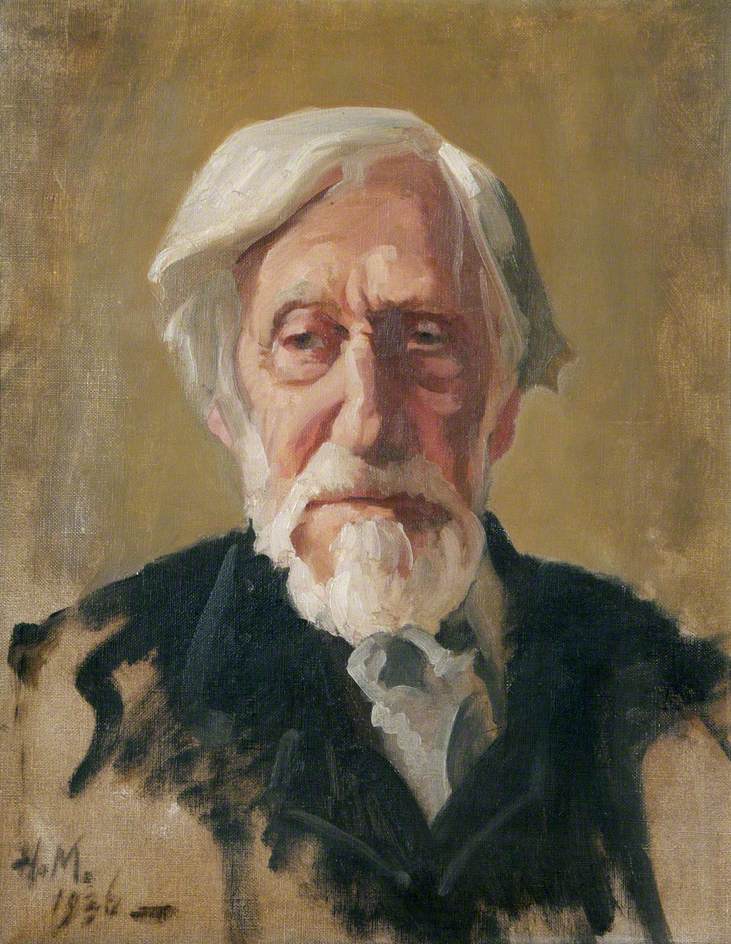 Arthur Heygate Mackmurdo portrait by Haydn Reynolds Mackey. © the artist's estate. Photo credit: William Morris Gallery via ArtUK
Arthur Heygate Mackmurdo portrait by Haydn Reynolds Mackey. © the artist's estate. Photo credit: William Morris Gallery via ArtUK
English architect and designer, Arthur Mackmurdo, was another major influence on the Art and Crafts Movement, mainly through the Century Guild of Artists, which he set up with architect Herbert Horne in 1882. Like Dresser, Mackmurdo’s influence extended across successive design movements. The guild would become one of the most successful of the period, attracting leading artists, sculptors and craftspeople, including William de Morgan, renowned for his studio pottery and ceramic tiles.
The guild, like Morris & Co, was a one-stop shop, offering a complete home furnishing and building design service. Its members were encouraged to involve themselves in production as well as design and Mackmurdo was no exception; he became skilled in several crafts, including metalworking and cabinet making.
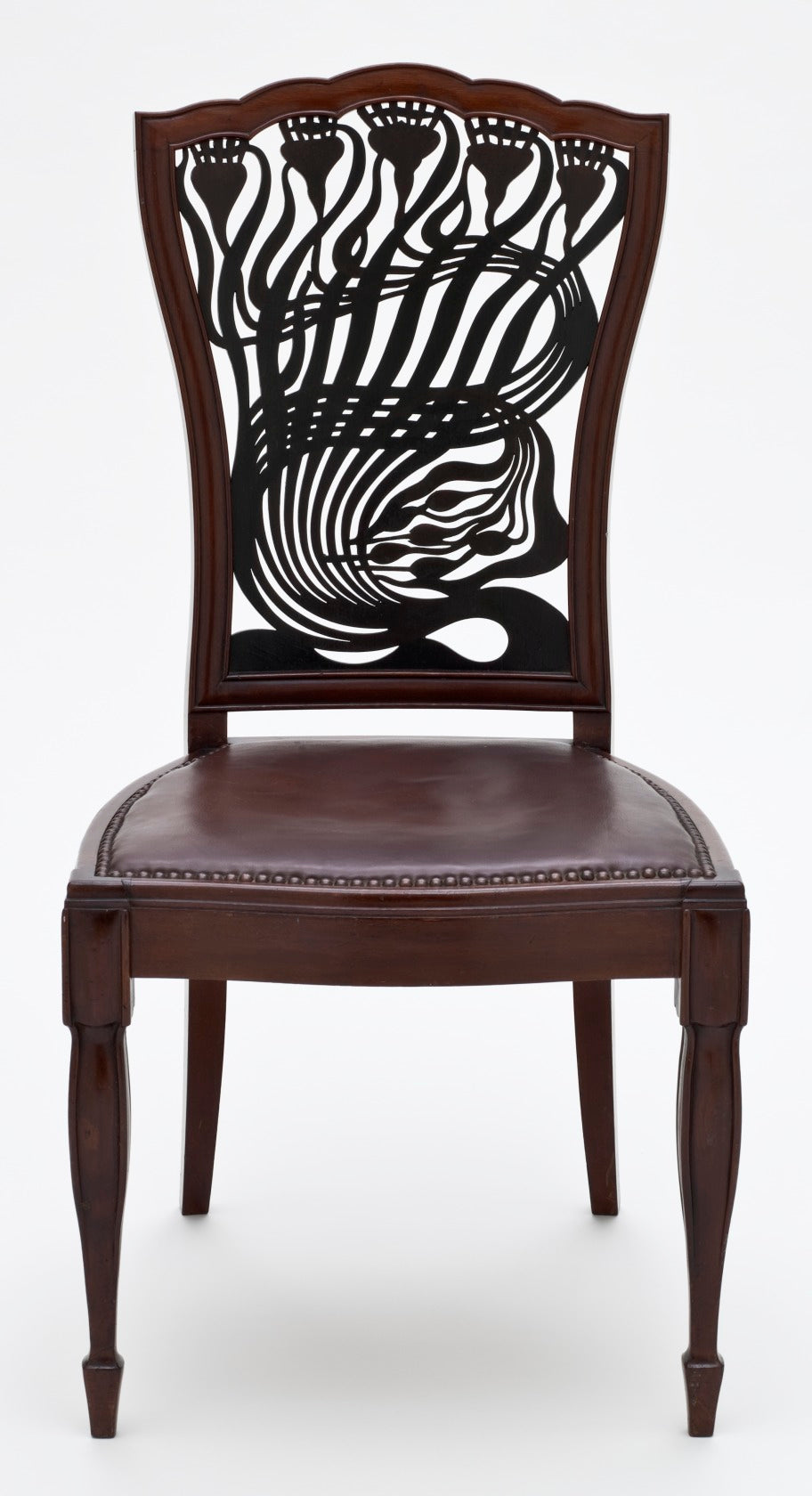 Chair c1883, designed by Arthur Mackmurdo. Public domain
Chair c1883, designed by Arthur Mackmurdo. Public domain
A signature Mackmurdo motif was sinuously curving foliage, which would become one of the hallmarks of Art Nouveau. Another was the use of thin square columns, capped with flat squares – a style adopted and adapted by C F A Voysey (see below) and, subsequently, by Charles Rennie Mackintosh – and which still features in many 21st century designs.
3) C. F. A. Voysey (1857-1941)
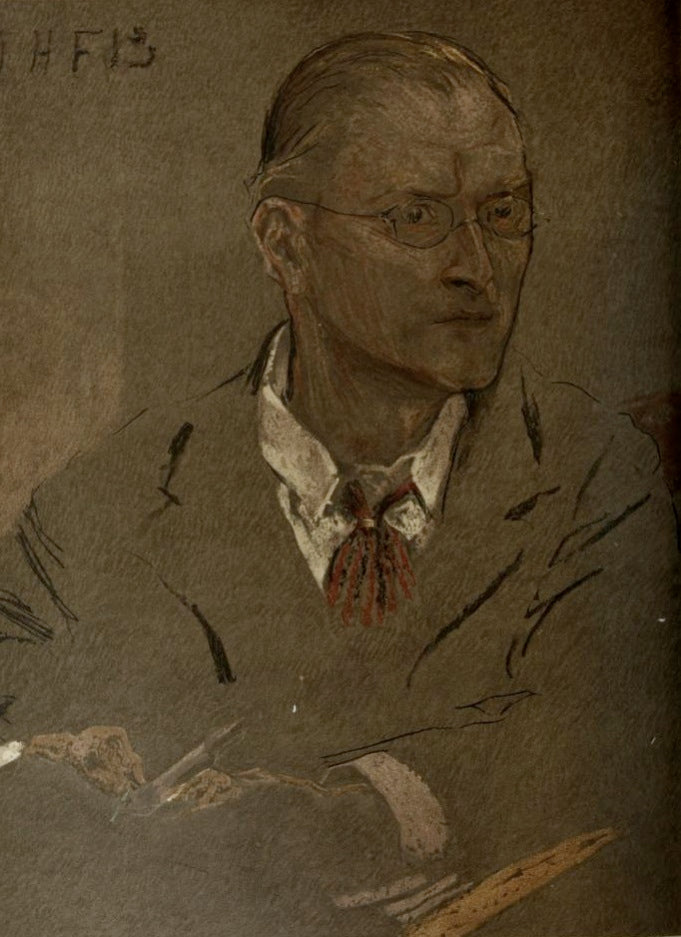
Portrait of Charles Francis Annesley Voysey, after John Henry Frederick Bacon.
Public domain
One name inextricably linked with Sanderson, is that of Charles Francis Annesley Voysey (generally referred to as C. F. A. Voysey). A celebrated British architect and master of the decorative arts, he designed the Sanderson factory in Chiswick (1901), which was named Voysey House in his memory.
His was an exceptional talent that encompassed furniture, wallpapers, fabrics, carpets, tiles, metalwork, ceramics and graphic design. He worked with high quality materials, such as unpolished oak, and a keynote of his textile and wallpaper designs was a careful balance between vertical and horizontal elements. Voysey’s career as a wallpaper and textile designer lasted almost 50 years, spanning the Arts & Crafts and Art Nouveau periods.
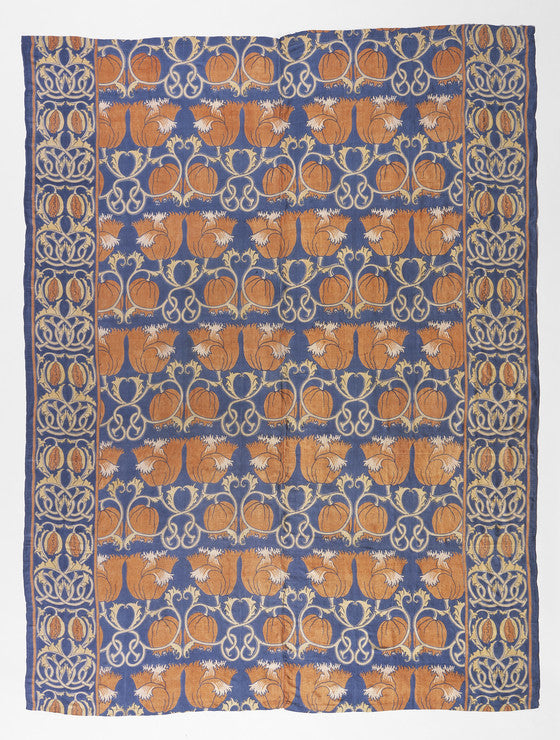
Bed cover designed by C F A Voysey. Public domain image via LACMA
William Morris was a major influence on his work, in terms of pattern and motifs from the natural world, as we can see In Voysey’s designs, such as The Owl and Saladin, examples of which are held at the V&A. And as you’ll see from our lighting selection below, Voysey’s designs for Sanderson, and the influence he had on other designers who worked for the company, are still very much in evidence, 80 years after his death.
4) John Henry Dearle (1859-1932)
Dearle was personally trained by William Morris, and designed many of the later wallpapers and textiles released by Morris & Co. His signature was background and foliage patterns to tapestry designs featuring figures by Pre-Raphaelite Brotherhood artists, particularly Edward Burne-Jones.
Born in Camden Town, Dearle began as a shop assistant in Morris & Co.'s showroom in Oxford Street in 1878. He moved to the company's glass painting workshop, where he worked mornings and studied design in the afternoons and was talent-spotted by Morris, who took him on as his tapestry apprentice. Dearle was soon responsible for the training of all tapestry apprentices in the workshop, and his rise continued until was made head designer for the firm in 1890 and finally appointed Art Director of Morris & Co. following Morris's death in 1896.

Screen with embroidered panels, 1885-1910, designed by John Henry Dearle V&A Museum no. CIRC.848-1956. Public domain
5) May Morris (1862-1938)
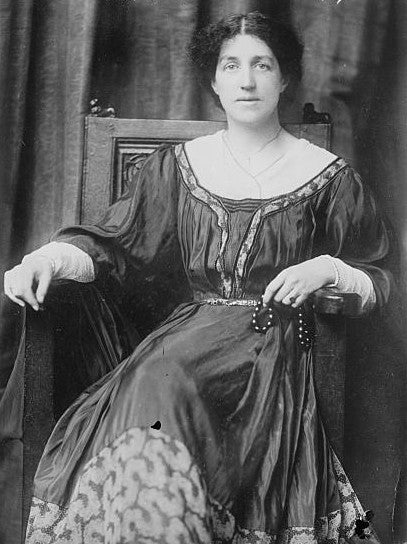 May Morris. Public domain
May Morris. Public domain
Women designers were the quiet, often silenced, pioneers of the Arts & Crafts movement. Although there were large numbers of women producing exquisite work – because this was seen as an extension of traditional domestic crafts –they were excluded from membership of the leading craft guilds.
Mary (May) Morris, the daughter of William, was one of the finest designers of embroidered textiles, as well as jewellery but her own work was frequently overshadowed by that of her father. She became a dedicated champion of women designers and, in 1907, set up the Women’s Guild of Arts, aimed at supporting and promoting women’s work – and one of the earliest examples of a women’s networking organisation.
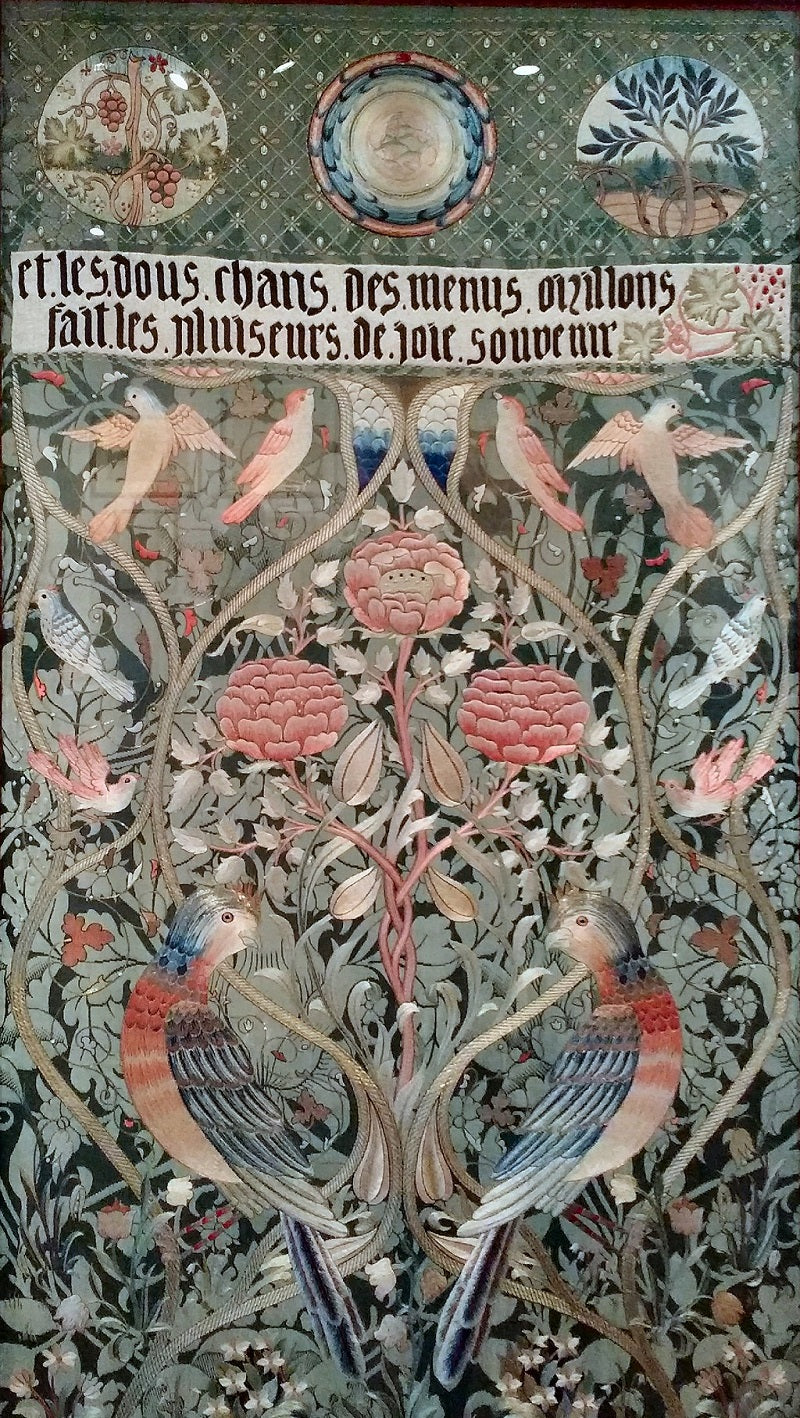
Autumn and Winter, embroidery by May Morris. Public domain
In the post-WWII years, English embroidery gradually became less popular, and significant changes in women’s working lives meant that they had far less time to devote to craft skills. Meanwhile, in the 1960s and ‘70s, interest in world and tribal embroidery grew, when travellers on the hippie trail started to bring back textiles from countries, such as India, which had their own embroidery traditions.
But English embroidery has undergone a significant renaissance in the 21st century, with a new generation of designers bringing energy and ideas into this centuries old craft. They include former investment banker, Eppie Thompson, who set up The Fabled Thread, which sells vibrant and eye-catching embroidery kits that bring a contemporary feel to traditional forms. Launched in 2020, The Fabled Thread was described by Homes and Gardens as having “taken the interiors world by storm”.
6) C. R. Ashbee 1863 –1942
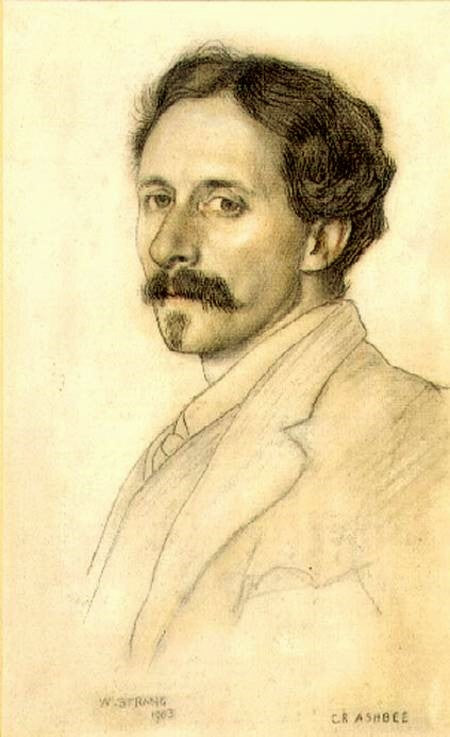 C.R. Ashbee by William Strang 1903. Public domain
C.R. Ashbee by William Strang 1903. Public domain
Like so many of the leading lights of the Arts & Crafts world, Charles Robert Ashbee worked in a range of creative disciplines, as an architect and designer, but he is also remembered as an entrepreneur and social reformer. His craft skills included metalwork, textile design, furniture, and jewellery.
The Guild and School of Handicraft, which Ashbee set up in 1882 in Whitechapel, then one of the most poverty-stricken areas of London, specialised in metalwork, jewellery and enamel work, as well as hand-wrought copper and wrought ironwork, and furniture. Ashbee’s reforming zeal, which lay behind the guild and school, is an approach that can be seen today by a growing number of 21st century social enterprises, such as Counterpoints, which was set up 10 years ago to support arts by and about refugees and migrants.
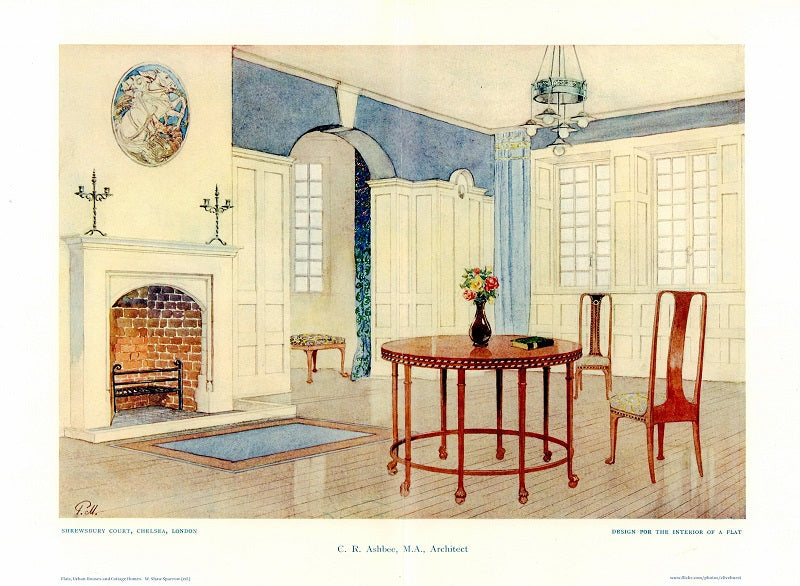
Interior c1907 by C R Ashbee. Photo: Clive Hurst via Creative Commons
When it came to building design, Ashbee was more than happy to take on a complete project, including all the interior decoration and furniture. Ashbee’s biographer, Fiona Macarthy, described his 1907 Villa San Giorgio in Taormina, Sicily (now the 5-star Hotel Ashbee), as “the most impressive” of the architect’s remaining buildings. And a far cry from Whitechapel…
Timeless maximalism at Pooky
Our collaboration with Archive by Sanderson Design has been such an exciting project for Pooky. The lighting collection we have created features 100 different items – dramatic shades, in a range of fabric designs, in a variety of sizes, representing some of the most memorable design styles to be found in the company’s archives, from signature stripes to forbidden fruit.
This fabric used for this colourful pendant shade is a reimagined version of Galactic Ink Golden Lily, originally designed by John Henry Dearle, protégé of William Morris:
 18cm pendant shade in John Henry Dearle's Galactic Ink Golden Lily from Sanderson's 'Archive'
18cm pendant shade in John Henry Dearle's Galactic Ink Golden Lily from Sanderson's 'Archive'
We mentioned C. F. A. Voysey’s love of motifs from the natural world and they feature in abundance in the Amaranth and Blush Tulip and Bird fabric used in our tapered and empire shade ranges. Voysey designed this fabric in 1895 but it looks totally fresh and contemporary.

35cm tall tapered shade in C. F. A. Voysey’s Amaranth and Blush Tulip & Bird from Sanderson's 'Archive'
And how about the fabulous flapper fringed shade? The fabric is Goblin Green Mildmay, which features verdant ogee-shaped flowerheads encasing floribunda clusters. The original design, which dates from the late 1890s, is believed to have been inspired by Voysey’s work, as featured in the period’s influential Studio Journal of Decorative Arts.
 40cm flapper shade in C. F, A. Voysey's Goblin Green Mildmay from Sanderson's 'Archive'
40cm flapper shade in C. F, A. Voysey's Goblin Green Mildmay from Sanderson's 'Archive'
Browse the full Pooky x 'Archive' by Sanderson Design collaboration here.
If you liked this post, we think you’ll enjoy:
Amazing interiors: Red House, Bexleyheath
Classic interior design styles and how to light them: Arts & Crafts
Great interior designers: William Morris
Meet the interior designer: Sarah Laming (@ahometomakeyousmile)
Image top: George Frampton. Season Ticket to The Arts and Crafts Exhibition Society for 1890. Credit: Aspinwall Sam via creative commons


